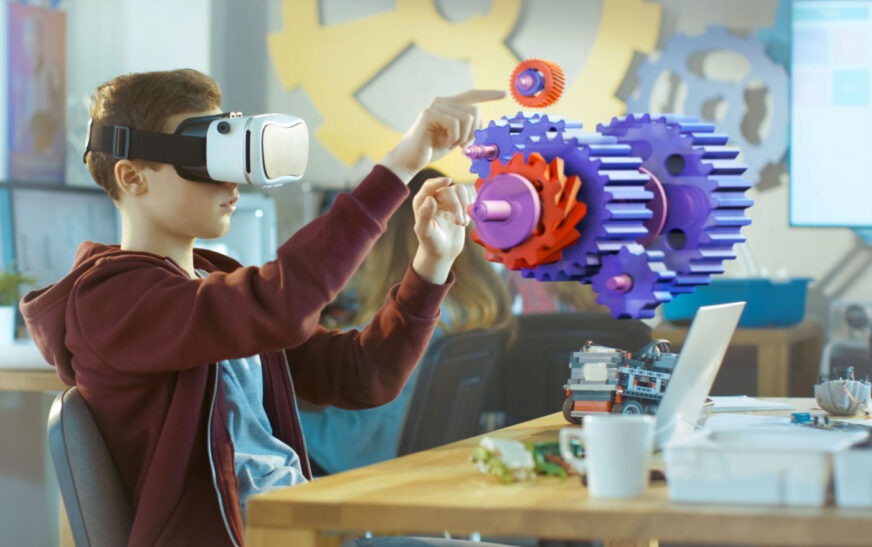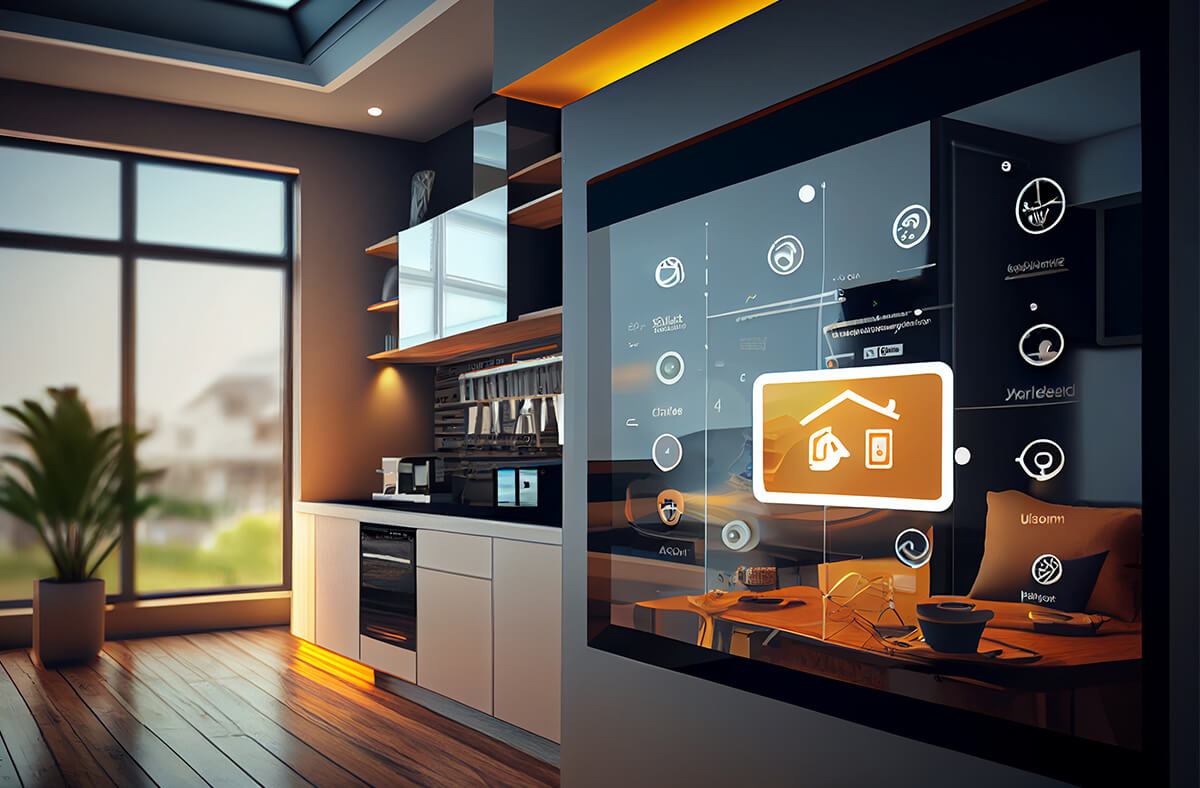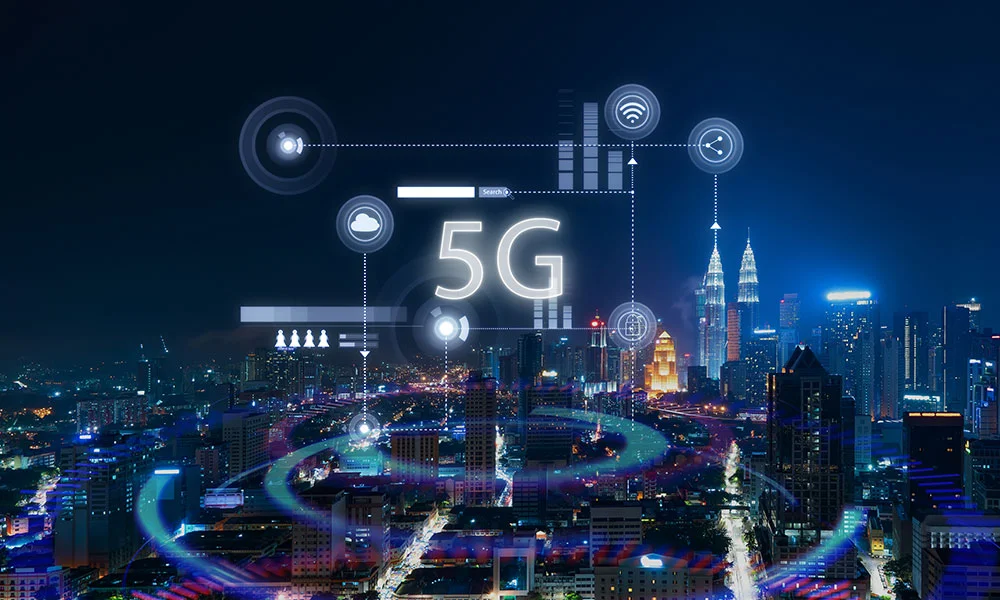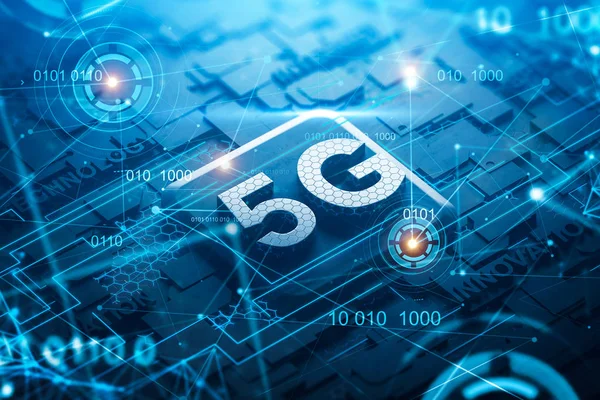Using interactive technology to improve learning.
Imagine walking into a classroom where history comes alive, or biology lessons are transformed into immersive experiences. This isn’t science fiction; it’s the reality of Augmented Reality (AR) in education. As technology evolves, so does our approach to learning. AR is paving the way for interactive and engaging educational experiences that captivate students like never before.
With devices we already use daily, educators can now enhance their teaching methods and bring subjects to life in vivid detail. From virtual field trips to 3D models of complex structures, AR allows learners to explore concepts through dynamic engagement rather than passive memorization.
Join us as we delve into how this innovative technology is reshaping classrooms around the globe and unlocking new potentials for enhancing learning through interaction and creativity.

What is Augmented Reality (AR)?
Augmented Reality (AR) blends digital content with the real world, creating an interactive experience that enhances how we perceive our surroundings. Unlike Virtual Reality, which immerses users in a completely virtual environment, AR overlays images, sounds, and other sensory inputs onto the physical world.
Using devices like smartphones or AR glasses, people can interact with 3D models or animations as if they exist right beside them. This seamless integration of technology into everyday life offers endless possibilities for education.
In classrooms, students can visualize complex concepts by seeing them from different angles. Whether it’s exploring ancient civilizations through animated artifacts or dissecting virtual organisms in science class, AR transforms traditional learning into a hands-on adventure. By making information more tangible and engaging,it fosters deeper comprehension and retention among learners of all ages.

The Benefits of Using AR in Education
Augmented Reality (AR) transforms traditional learning environments into dynamic experiences. It allows students to interact with digital information superimposed onto the real world, making lessons more engaging.
One of the key advantages is enhanced retention. When learners visualize concepts through interactive graphics or simulations, they grasp subjects better and remember them longer.
Moreover, AR fosters creativity. Students can experiment in safe virtual settings, encouraging innovation without the fear of making mistakes.
Collaboration also flourishes in an AR-enhanced classroom. Group projects become immersive adventures where students work together to solve problems or explore complex topics.
Additionally, personalization plays a crucial role. Educators can tailor AR content to meet diverse learning styles and paces, ensuring all learners benefit from technology’s potential.
With such compelling benefits, integrating augmented reality clearly enriches educational experiences for both teachers and students alike.

Examples of AR in Education
Augmented Reality is transforming classrooms with innovative applications. For instance, platforms like Google Expeditions allow students to explore historical sites and even the solar system without leaving their desks.
Science lessons come alive through AR apps such as Merge Cube. Students can visualize complex structures like the human heart or molecules, manipulating them in real-time for a deeper understanding.
Language learning also benefits from AR technology. Apps like Mondly utilize interactive scenarios where learners can practice vocabulary in immersive environments, enhancing retention through engaging experiences.
Art education takes on new dimensions too. Tools like Artivive enable students to bring their drawings to life by overlaying animated visuals upon completion of their physical artwork, merging creativity and technology seamlessly.
These examples illustrate how diverse subjects leverage augmented reality to create memorable learning experiences that foster engagement and collaboration among students.

How AR Enhances Learning
Augmented Reality breathes new life into the traditional learning experience. By overlaying digital information onto the physical world, it creates a rich tapestry of interaction and engagement. Students can visualize complex concepts in 3D, making abstract ideas tangible.
Imagine exploring the solar system right from your classroom. With AR, students can manipulate planets and understand their orbits firsthand. This hands-on approach fosters curiosity and deeper understanding.
AR also caters to various learning styles. Visual learners benefit immensely when they see content come alive around them. Kinesthetic learners thrive on interactive experiences that allow them to touch and engage with materials directly.
Furthermore, AR encourages collaboration among students as they work together on projects or problem-solving tasks in an immersive environment. This shared experience not only enriches knowledge but builds essential teamwork skills for future endeavors.

Challenges and Limitations of AR in Education
While augmented reality (AR) offers exciting opportunities in education, it also comes with challenges. One significant hurdle is the cost of technology. Schools may struggle to afford AR devices and software.
Another issue is the digital divide. Not all students have access to smartphones or tablets, which can lead to unequal learning experiences.
Teacher training presents another challenge. Educators may need additional support and resources to effectively integrate AR into their lesson plans. Without proper guidance, its potential could be underutilized.
Additionally, content quality varies widely across platforms. Some applications may not provide accurate information or engaging experiences, diluting the educational impact of AR.
There are concerns about student distraction. The immersive nature of AR might divert attention away from core lessons if not managed carefully.

Future Possibilities and Developments of AR in Education
The future of augmented reality in education looks incredibly promising. As technology advances, AR will become even more accessible to schools and students alike. Imagine classrooms where complex subjects come alive through interactive 3D models that students can manipulate at their fingertips.
Educational institutions may integrate AR with artificial intelligence, offering personalized learning experiences tailored to each student’s needs. This fusion could provide real-time feedback and adapt lessons based on individual progress.
Collaboration between educators and tech developers is also expected to flourish. Together, they can create immersive educational content that aligns closely with curriculum standards while engaging diverse learners.
As mobile devices continue to evolve, the potential for AR applications will expand beyond traditional classroom settings into everyday learning environments. Field trips could transform into fully interactive experiences without leaving the school premises—bringing history or science right before a student’s eyes.

Conclusion
The integration of augmented reality (AR) in education is transforming how students engage with content. This innovative technology enables learners to visualize complex concepts and interact with virtual elements as if they were part of their real-world environment.
Educators are discovering new avenues for creativity, enhancing lessons by incorporating AR into their teaching strategies. The potential for immersive learning experiences can captivate students’ attention like never before.
As we look ahead, the continuous advancement of AR tools promises even greater enhancements in educational practices. With ongoing developments, teachers will have more resources at their fingertips to foster an engaging atmosphere.
Embracing interactive technologies like AR opens doors to a rich landscape where education becomes an adventure rather than just a routine task. It’s about igniting curiosity and inspiring lifelong learning through dynamic interactions that resonate deeply with today’s digital-savvy students.
Defining Augmented Reality (AR)
Augmented Reality (AR) blends the digital and physical worlds. It overlays computer-generated images, sounds, or other sensory enhancements onto real-life environments.
This technology uses devices like smartphones, tablets, and AR glasses to create immersive experiences. Users can interact with both virtual elements and their surroundings seamlessly.
Think of it as a layer of information added on top of what you see. This interactive experience enhances perception and engagement in various fields, especially education.
By transforming ordinary lessons into dynamic explorations, AR encourages curiosity. Learning becomes more compelling as students visualize complex concepts in three dimensions.

Advantages of AR in Education
Augmented Reality (AR) transforms traditional learning into something extraordinary. It immerses students in their subjects, making lessons more engaging and memorable.
With AR, complex concepts come to life. Imagine exploring the solar system right from your classroom or dissecting a virtual frog without the mess. This hands-on experience deepens understanding and retention of information.
Collaboration thrives through interactive experiences. Students can work together on projects that require them to solve problems using real-world applications of their knowledge.
Moreover, AR caters to various learning styles. Visual learners benefit from dynamic visuals, while kinesthetic learners enjoy tactile interactions with digital elements. This inclusivity ensures every student can thrive.
It fosters curiosity and creativity by encouraging exploration beyond textbooks. Students become active participants in their education rather than passive recipients of information.

Real-life examples of AR in the classroom
Teachers around the world are embracing augmented reality to spark student interest and engagement. For instance, with AR apps like Google Expeditions, students can embark on virtual field trips. They can explore ancient ruins or dive into the ocean without leaving their classroom.
In science classes, platforms like Merge Cube allow students to interact with 3D models of the human body. This hands-on approach enhances understanding of complex systems in an immersive way.
Art education has also transformed thanks to AR technology. Apps such as Quiver let students color a page that comes to life when viewed through a device’s camera, merging creativity with interactive learning.
Mathematics isn’t left behind either; tools like GeoGebra enable learners to visualize geometric shapes in real time. These experiences not only make lessons more enjoyable but help cement knowledge by engaging multiple senses simultaneously.

Challenges and limitations of using AR in education
Implementing augmented reality in education comes with its set of challenges. One major hurdle is the cost associated with AR technology. Schools may struggle to secure funding for devices and software, limiting access for some students.
Technical issues can also arise. Connectivity problems or device malfunctions could disrupt lessons, leaving educators frustrated and students disengaged.
Training teachers to effectively use AR tools poses another challenge. Not all educators feel confident integrating new technology into their teaching methods without proper guidance.
Additionally, there’s a risk that not every student will engage equally with AR experiences. Some learners might find it overwhelming or distracting rather than enhancing their understanding.
The content must be relevant and aligned with educational goals; otherwise, it risks being just a novelty rather than a meaningful learning experience. These factors require careful consideration as schools look to adopt interactive technologies in the classroom.

How to incorporate AR in lesson plans
Incorporating AR into lesson plans can spark excitement among students. Start by selecting a topic that benefits from interactive elements. Look for apps or platforms designed for educational purposes, such as Google Expeditions or Merge Cube.
Next, create engaging activities that utilize these tools. For example, during a biology lesson on the human body, use an AR app to allow students to explore anatomical structures in 3D. This hands-on approach fosters curiosity and deeper understanding.
Ensure you provide clear instructions before diving into the technology. Set expectations so students know how to interact with the content effectively.
Encourage collaboration by having small groups work together using AR experiences. This promotes teamwork while enhancing learning through shared exploration and discussion.
Gather feedback after each session. Understanding what worked well helps refine future lessons and keep the enthusiasm alive within your classroom environment.

The future of AR in education
The future of AR in education is brimming with potential. As technology advances, we will see more immersive experiences that engage students like never before. Imagine walking into a classroom where historical events come to life right before your eyes.
Integration with artificial intelligence could personalize learning even further. Students might interact with virtual tutors tailored to their unique needs and preferences
.
Collaboration tools may allow learners from different parts of the world to connect through shared AR environments. This can foster cultural exchange and diverse perspectives.
Furthermore, affordability will likely improve access for schools globally. More institutions could adopt interactive methods, bridging gaps and making quality education accessible for all.
Research in neuroscience suggests that experiential learning enhances retention rates significantly. With AR, educators have a powerful tool at their disposal to create meaningful educational experiences that stick long after class ends.

Conclusion
The integration of Augmented Reality in education represents a significant shift in how we approach learning. By leveraging interactive technology, educators can create immersive experiences that captivate students and enhance their understanding of complex subjects. The benefits are clear: increased engagement, improved
retention rates, and the ability to visualize concepts that may otherwise be abstract.
As more schools adopt AR tools, we witness exciting real-life applications that bring lessons to life—from exploring ancient civilizations through virtual field trips to dissecting 3D models of the human body. These innovative approaches not only make learning enjoyable but also foster critical thinking skills and collaboration
among students.
While challenges remain—such as accessibility issues and the need for proper training—the potential for AR to revolutionize education is undeniable. Looking ahead, advancements in technology promise even more opportunities for enhancing educational experiences through augmented reality.
Embracing this interactive form of learning can transform classrooms into dynamic environments where curiosity thrives and knowledge expands. It’s an exciting time for educators and learners alike as they navigate this new frontier together.






